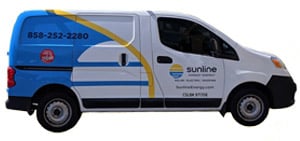According to the new roadmap, California could easily generate 50% of its electricity from renewable power sources like solar, wind, and geothermal.
And keep in mind that this is not the unrealistic prediction of an overzealous environmental group. CAISO is the non-profit organization that oversees the state’s power and transmission lines. Its stated mission is to:
[O]perate the grid reliably and efficiently, provide fair and open transmission access, promote environmental stewardship, facilitate effective markets, and promote infrastructure development.
If CAISO believes that 50% renewable power is achievable, then it almost certainly is. And today, we’ll look at the first critical step in making this green future possible.
California’s Power Grid Becoming Low Carbon via Green Energy
In nearly all cases, electricity is used at the very moment that it is created (or within seconds – if the energy must be transmitted across power lines).
With renewable energy, this creates problems.
Sources like wind power and solar energy are largely dependent on weather conditions. In aggregate, they are extremely reliable. But at any given moment, it is impossible to predict how much solar or wind power will be available.
Fortunately, consumers and utilities are becoming better about matching renewable energy demand and supply. Innovations like smart thermostats, energy-efficient appliances, and time-of-use pricing all help. These solutions make it easier for individual homeowners and businesses to delay electricity consumption until it makes sense.
But even with these improvements, California’s power grid grid isn’t really built for all of this new renewable energy capacity.
The California ISO recommends making larger investments in clean power storage. This would allow utilities to accumulate excess solar power and wind power when electricity demand is low – and release it whenever energy demand goes back up.
Utility-scale batteries and pumps represent one storage option. But an even better solution is to invest in more electric vehicles (EVs) throughout the state. These are, in effect, traveling renewable energy batteries.
According to the report,
If informed consumers charge their vehicles when renewable generation is abundant, but demand and prices are low, they help stabilize the grid while using clean-sourced electricity.
The end result is:
- Lower grid electricity prices for consumers
- A more reliable power grid for everyone
- Fewer pollutants released – both from power plants and exhaust pipes
- Cheaper driving for motorists and commuters
Even the utility companies benefit. An influx of EVs throughout the state would help slow down the death spiral that some power providers face.
Step 2 in the Push for a Low Carbon Utility Grid
Adding more storage capacity throughout the grid (via electric vehicles) is a commonsense solution that benefits everyone. And it is an important first step in California’s push for a truly sustainable future.
Tune in tomorrow when we look at the next step: Reshaping the Energy Demand Curve.

